Mega888 Online Casino Malaysia Duitnow Slot Ewallet Casino TNG
Selamat datang ke Mega888, platform kasino dalam talian yang semakin popular di Malaysia. Mega888 menawarkan pengalaman kasino dalam talian yang menakjubkan. Kami akan jelajahi keistimewaan Mega888, termasuk penggunaan e-wallet TNG dan sistem pembayaran DuitNow.
Mega888 adalah pilihan utama pemain kasino dalam talian di Malaysia. Ia menawarkan kepelbagaian permainan dan kemudahan serta keselamatan transaksi. Dengan e-wallet TNG dan sistem DuitNow, transaksi deposit dan pengeluaran menjadi lebih cepat dan selamat.
Kami akan memberi panduan lengkap tentang mendaftar dan menggunakan DuitNow. Anda juga akan belajar mengurus e-wallet TNG dan menikmati permainan slot terbaik. Kami akan berkongsi tips untuk meningkatkan peluang kemenangan anda. Siap untuk menjelajahi dunia kasino dalam talian ini?
Intisari Utama
- Mega888 adalah platform kasino dalam talian terkemuka di Malaysia
- Menggunakan e-wallet TNG dan sistem pembayaran DuitNow untuk deposit dan pengeluaran yang mudah dan selamat
- Menawarkan pelbagai permainan slot dan kasino langsung yang menarik
- Mempunyai ciri-ciri keselamatan yang ketat untuk melindungi akaun pengguna
- Terdapat pelbagai bonus dan promosi menarik untuk para pemain
Pengenalan Kepada Platform Mega888 Malaysia
Mega888 adalah platform kasino dalam talian yang sangat popular di Malaysia. Ia mula beroperasi di Malaysia sejak tahun 2015. Sekarang, Mega888 menjadi pilihan utama bagi banyak pemain judi di Malaysia, Singapura, dan Thailand.
Sejarah Mega888 di Malaysia
Mega888 mula beroperasi di Malaysia pada tahun 2015. Dari awal, ia sudah menjadi salah satu platform permainan dalam talian yang paling disegani. Syarikat ini kini memegang lebih daripada 90% bahagian pasaran di Malaysia.
Ciri-ciri Utama Platform
- Menawarkan pelbagai jenis permainan termasuk slot, kasino langsung, dan perjudian sukan.
- Menyediakan antara muka pengguna yang mudah digunakan dan mesra.
- Mempunyai pilihan pembayaran yang fleksibel termasuk e-wallet, kad kredit, dan pemindahan bank.
- Sentiasa mengeluarkan permainan dan promosi baharu untuk mengekalkan pengalaman yang segar bagi para pemain.
Lesen dan Keselamatan
Mega888 beroperasi di bawah lesen yang sah. Ia mengikuti piawaian keselamatan industri yang tinggi untuk melindungi maklumat dan dana pengguna. Teknologi enkripsi canggih digunakan untuk memastikan setiap transaksi kewangan dan maklumat peribadi berada dalam keadaan selamat.
| Statistik Penting |
Angka |
| Bahagian Pasaran Mega888 di Malaysia |
Melebihi 90% |
| Pemain dari Malaysia, Singapura, dan Thailand |
80% |
| Jumlah Muat Turun Aplikasi Mega888 |
Lebih 1 juta |
Mega888 telah membuktikan dirinya sebagai platform kasino dalam talian yang boleh dipercayai dan berprestij di Malaysia. Dengan sejarah yang kukuh, ciri-ciri menarik, dan langkah-langkah keselamatan yang komprehensif, ia menjadi pilihan utama bagi peminat judi atas talian di rantau ini.
Cara Mendaftar Akaun Mega888
Bagi pemain yang ingin menikmati pengalaman akaun kasino dalam talian yang seru, pendaftaran Mega888 sangat mudah. Anda hanya perlu mengikuti beberapa langkah mudah untuk buat akaun di Mega888, yang sangat popular di Malaysia:
- Lawati laman web rasmi Mega888 dan klik butang "Daftar" di atas skrin.
- Isikan maklumat peribadi seperti nama, nombor telefon, alamat e-mel, dan nombor kad pengenalan.
- Pilih mata wang untuk akaun anda - Ringgit Malaysia (RM) atau Dolar Singapura (SGD).
- Cipta kata laluan yang selamat dan mudah diingat untuk melindungi akaun anda.
- Baca dan bersetuju dengan terma dan syarat Mega888.
- Selesaikan pengesahan akaun dengan menghantar salinan dokumen pengenalan diri yang sah.
- Setelah pendaftaran berjaya, anda boleh mula main permainan slot dan kasino menarik di Mega888.
Dengan mengikuti langkah mudah ini, anda akan dapat menikmati pengalaman bermain yang selamat dan menyeronokkan di akaun kasino dalam talian Mega888. Ingatlah untuk selalu menjaga keselamatan akaun anda untuk pengalaman terbaik!
| Statistik Mega888 |
Nilai |
| Bahagian Pasaran Permainan Slot di Malaysia |
Lebih 90% |
| Pemain dari Malaysia, Singapura, dan Thailand |
80% |
| Jumlah Muat Turun Aplikasi Mega888 |
Lebih 1 Juta |
Mega888 telah menjadi pemimpin industri perjudian dalam talian di Malaysia. Mereka menawarkan banyak permainan slot dan kasino yang menarik dengan bonus dan jackpot yang menggoda.
Sistem Pembayaran DuitNow di Mega888
Mega888 adalah platform kasino dalam talian yang popular di Malaysia. Mereka menawarkan pelbagai pilihan pembayaran untuk pengguna. DuitNow adalah salah satu kaedah pembayaran yang ditawarkan, memudahkan transaksi pembayaran dalam talian dan transaksi kasino.
Kelebihan Menggunakan DuitNow
Penggunaan DuitNow di Mega888 memberikan beberapa kelebihan:
- Proses transaksi yang pantas dan selamat
- Tiada bayaran tambahan atau yuran tersembunyi
- Integrasi yang lancar dengan sistem Mega888
- Kebolehpercayaan dan reputasi DuitNow sebagai platform pembayaran dalam talian
Langkah-langkah Transaksi DuitNow
Ini adalah langkah mudah untuk transaksi menggunakan DuitNow di Mega888:
- Log masuk ke akaun Mega888 anda
- Navigasi ke halaman deposit dan pilih DuitNow sebagai kaedah pembayaran
- Masukkan jumlah deposit yang dikehendaki
- Pilih bank anda dan log masuk ke akaun bank anda untuk mengesahkan transaksi
- Transaksi anda akan diproses dengan segera dan baki anda akan dikemaskini di Mega888
Dengan menggunakan DuitNow, pemain Mega888 dapat menikmati pengalaman pembayaran yang lancar. Ini memudahkan aktiviti transaksi kasino mereka.
slot ewallet mega888 TNG
Bagi peminat kasino dalam talian, menggunakan e-wallet untuk bermain slot di Mega888 sangat popular. Anda boleh menyambungkan akaun e-wallet Touch 'n Go (TNG) anda. Ini membolehkan anda menikmati keselesaan dan keselamatan pembayaran mudah alih semasa bermain slot Mega888.
Kelebihan menggunakan e-wallet TNG untuk slot Mega888 adalah:
- Transaksi yang pantas dan mudah
- Keselamatan terjamin dengan teknologi enkripsi
- Tiada had deposit minimum yang tinggi
- Pemantauan transaksi yang lebih baik
Untuk mula menggunakan TNG di Mega888, ikuti langkah-langkah berikut:
- Daftar dan pasangkan akaun TNG anda dengan akaun Mega888 anda.
- Pilih TNG sebagai kaedah pembayaran semasa membuat deposit.
- Masukkan jumlah deposit dan sahkan transaksi melalui aplikasi TNG.
- Dana akan terus dimasukkan ke dalam akaun Mega888 anda.
Dengan kemudahan e-wallet TNG, pengalaman bermain slot Mega888 anda akan lebih lancar dan selamat. Jangan tunggu lagi! Daftarkan akaun TNG anda sekarang dan mulakan bertaruh di platform Mega888 yang terpercaya.
Permainan Popular di Mega888
Mega888 adalah platform kasino dalam talian yang semakin popular di Malaysia. Ia menawarkan pelbagai permainan slot dan kasino langsung yang menarik. Pemain Mega888 suka bermain permainan slot popular seperti 918Kiss dan Kiss918.
Kasino langsung juga menjadi tarikan utama. Pelbagai pilihan seperti roulette, blackjack, dan baccarat tersedia.
Slot Games Terbaik
Mega888 menawarkan pelbagai permainan Mega888 yang menarik. Anda boleh menemui tema yang pelbagai dan peluang untuk meraih jackpot besar. Berikut adalah beberapa slot terpopular yang boleh anda cuba:
- Mega Moolah
- Gladiator
- Aztec Gems
- Dragons of the North
- Cleopatra
Live Casino Games
Bagi peminat kasino langsung, Mega888 mempunyai pilihan menarik. Anda boleh menikmati:
- Roulette
- Blackjack
- Baccarat
- Sic Bo
- Dragon Tiger
Dengan pelbagai pilihan permainan slot dan kasino langsung, Mega888 menawarkan pengalaman bermain yang menyeronokkan. Pemain di Malaysia pasti akan menikmati.
Panduan Deposit Menggunakan E-wallet
Untuk menikmati kasino dalam talian di Mega888, kaedah deposit penting. E-wallet semakin popular kerana mudah dan selamat. Kami akan tunjukkan cara deposit menggunakan e-wallet di Mega888.
Kelebihan Menggunakan E-wallet untuk Deposit
- Mudah dan cepat - Deposit dengan Touch 'n Go, GrabPay, dan Boost sangat ringkas.
- Keselamatan tinggi - E-wallet melindungi maklumat kewangan anda.
- Kawalan deposit - Anda boleh pantau deposit anda dengan mudah.
Langkah-langkah Deposit Menggunakan E-wallet
- Log masuk ke akaun Mega888 anda.
- Pergi ke "Deposit" di laman atau aplikasi Mega888.
- Pilih e-wallet seperti Touch 'n Go, GrabPay, atau Boost.
- Masukkan jumlah deposit yang dikehendaki.
- Ikut arahan untuk menyelesaikan deposit di aplikasi e-wallet.
- Log masuk ke aplikasi e-wallet dan sahkan transaksi.
- Dana akan masuk ke akaun Mega888 anda segera.
Dengan mengikuti langkah mudah ini, deposit ke Mega888 anda akan cepat dan selamat. Ini memastikan pengalaman bermain yang lancar dan selamat.
Keselamatan Transaksi di Mega888
Di Mega888, keselamatan kasino dalam talian sangat penting. Mereka mempunyai langkah keselamatan yang lengkap untuk melindungi pengguna. Ini termasuk melindungi dari aktiviti yang tidak sah.
Teknologi Enkripsi
Mega888 menggunakan enkripsi data canggih untuk melindungi transaksi kewangan. Data sensitif seperti maklumat kad kredit dan perbankan disulitkan dengan algoritma tinggi. Ini untuk memastikan keselamatan maksimum.
Sistem Verifikasi
Mega888 juga mempunyai sistem verifikasi pengguna yang ketat. Mereka memerlukan pengesahan identiti melalui pelbagai langkah. Ini termasuk pengesahan dua faktor untuk memastikan hanya pemilik akaun sah yang boleh mengakses dan melakukan transaksi.
Dengan teknologi enkripsi dan sistem verifikasi yang kuat, Mega888 mencipta persekitaran bermain yang selamat. Ini untuk semua pengguna di Malaysia.
Bonus dan Promosi Mega888
Di Mega888, pemain dapat menikmati banyak bonus dan promosi menarik. Ini memberikan nilai tambah kepada pengalaman mereka berjudi online. Dari bonus selamat datang yang menggoda hingga promosi musim yang mengujakan, Mega888 sentiasa memberi peluang kepada pemain untuk mendapatkan lebih banyak ganjaran.
Bonus Selamat Datang adalah tawaran khas untuk pemain baru. Bonus ini boleh digunakan untuk bermain pelbagai jenis permainan seperti slot dan kasino langsung. Ini memberikan pemain peluang untuk memulakan pengalaman perjudian mereka dengan lebih baik.
Bonus Deposit diberikan apabila pemain membuat deposit ke dalam akaun mereka. Jumlah bonus yang diberikan bergantung kepada jumlah deposit yang dibuat. Ini memberikan insentif kepada pemain untuk terus bermain dan meningkatkan deposit mereka.
| Jenis Bonus |
Perincian |
Syarat Tuntutan |
| Bonus Selamat Datang |
Bonus sehingga RM1,000 untuk pemain baru |
Daftar akaun baru dan buat deposit pertama |
| Bonus Deposit |
Bonus sehingga 150% daripada jumlah deposit |
Buat deposit ke dalam akaun dan penuhi syarat taruhan |
| Promosi Bermusim |
Bonus dan ganjaran istimewa seperti Birthday Month Bonus |
Ikuti syarat dan tempoh promosi yang ditetapkan |
Mega888 juga sering menjalankan promosi bermusim. Ini memberikan peluang kepada pemain untuk mendapatkan bonus dan ganjaran istimewa. Contohnya, promosi Birthday Month Bonus memberikan bonus tambahan pada bulan ulang tahun pemain.
Dengan pelbagai bonus kasino dan promosi Mega888, pemain boleh memanfaatkan tawaran khas ini. Ini meningkatkan peluang mereka untuk menang dan menikmati pengalaman perjudian yang lebih menguntungkan.
Panduan Bermain Slot Online
Bermain slot di Mega888 boleh sangat menyeronok dan menguntungkan. Namun, anda perlu strategi dan pengurusan modal yang baik. Ikuti panduan ini untuk meningkatkan peluang menang anda.
Tips Menang
Anda boleh meningkatkan peluang menang dengan mengikuti beberapa tips ini:
- Pelajari ciri-ciri permainan dan mekanisme pembayaran.
- Gunakan bonus dan promosi untuk tambah modal.
- Tetapkan had pertaruhan dan ikut disiplin.
- Jangan main tanpa strategi, main dengan bijak.
- Pilih permainan dengan RTP tinggi.
Strategi Pengurusan Modal
Pengurusan modal yang baik sangat penting untuk menang. Berikut adalah beberapa strategi yang boleh anda gunakan:
- Tentukan had deposit dan pertaruhan yang sesuai dengan kemampuan kewangan anda.
- Gunakan teknik 'bankroll management' untuk bahagikan modal ke beberapa sesi permainan.
- Elak risiko yang terlalu tinggi dengan tidak meningkatkan pertaruhan melebihi kemampuan anda.
- Belajar dari setiap pengalaman dan sesuaikan strategi anda jika perlu.
- Main dengan hati-hati dan bertanggungjawab untuk pengalaman yang seronok dan menguntungkan.
Dengan menerapkan strategi slot, tips menang, dan pengurusan wang yang betul, anda boleh meningkatkan peluang menang. Ingatlah untuk main dengan hati-hati dan bertanggungjawab.
Aplikasi Mega888 Mobile
Dunia aplikasi kasino mudah alih kini berkembang pesat. Mega888 mobile adalah salah satu platform terkemuka di Malaysia. Ia menawarkan banyak permainan dalam talian yang menarik dan menyeronokkan.
Para pemain boleh menikmati pengalaman kasino yang luar biasa hanya dengan menggunakan peranti mudah alih mereka.
Bagi mereka yang ingin mencoba Mega888 di mana sahaja dan bila-bila masa, aplikasi mudah alih Mega888 adalah pilihan yang ideal. Aplikasi ini boleh dimuat turun dengan mudah dan cepat. Anda boleh mendapatkannya dari Google Play Store atau App Store.
Ini memberikan akses lancar ke banyak permainan slot, kasino langsung, dan lain-lain.
Ciri-ciri Utama Aplikasi Mega888 Mobile
- Antara muka pengguna yang intuitif dan mesra pengguna
- Akses kepada semua permainan popular Mega888, termasuk permainan slot, kasino langsung, dan banyak lagi
- Proses log masuk dan daftar yang selamat dan mudah
- Kemampuan untuk melakukan deposit dan pengeluaran dengan cepat dan selamat melalui pelbagai kaedah pembayaran, termasuk ewallet seperti Touch 'n Go, Boost, dan GrabPay
- Notifikasi real-time mengenai promosi, bonus, dan acara terbaru
- Sokongan pelanggan 24/7 yang bersedia membantu dengan sebarang pertanyaan atau masalah
Aplikasi mudah alih Mega888 menawarkan ciri-ciri yang komprehensif dan pengalaman yang lancar. Ini menjadikannya pilihan unggul bagi peminat permainan dalam talian di Malaysia. Anda boleh menikmati kemudahan dan keseronokan aplikasi kasino mudah alih Mega888 di mana saja dan bila-bila masa.
Perbandingan E-wallet di Mega888
Mega888 adalah platform kasino dalam talian terkemuka di Malaysia. Ia menawarkan pelbagai pilihan e-wallet untuk pembayaran. Tiga e-wallet utama adalah Touch 'n Go, GrabPay, dan Boost. Setiap e-wallet mempunyai kelebihan dan kekurangan yang berbeza.
Touch 'n Go
Touch 'n Go adalah e-wallet paling popular di Malaysia. Ia digunakan banyak di Mega888. Ia menawarkan had transaksi tinggi dan proses pembayaran yang cepat.
Pengguna perlu pastikan akaun Touch 'n Go mereka mempunyai baki yang cukup. Ini penting sebelum deposit ke Mega888.
GrabPay
GrabPay semakin popular di kalangan pemain Mega888. Ia menawarkan pengalaman pembayaran yang mudah dan cepat. Had transaksi GrabPay juga fleksibel.
Pemain perlu berhati-hati dengan yuran tambahan GrabPay. Ini mungkin dikenakan untuk sesetengah transaksi.
Boost
Boost adalah e-wallet lain yang diterima di Mega888. Ia mempunyai proses transaksi yang cepat dan had yang munasabah. Namun, kurang popular berbanding Touch 'n Go dan GrabPay.
Pemain mungkin menghadapi cabaran dalam menggunakan Boost di Mega888.
| Ciri-Ciri |
Touch 'n Go |
GrabPay |
Boost |
| Had Transaksi |
Tinggi |
Fleksibel |
Munasabah |
| Kelajuan Pemprosesan |
Pantas |
Pantas |
Pantas |
| Keselamatan |
Baik |
Baik |
Baik |
| Populariti di Mega888 |
Tinggi |
Sederhana |
Rendah |
Ketiga e-wallet ini menawarkan pengalaman pembayaran yang baik di Mega888. Pemain perlu mempertimbangkan kelebihan dan kekurangan setiap e-wallet. Ini penting untuk memilih pilihan terbaik.
Sokongan Pelanggan 24/7
Di Mega888, kami tahu betapa pentingnya khidmat pelanggan yang cepat. Kami menawarkan sokongan 24 jam setiap hari, 7 hari seminggu. Ini untuk memastikan anda dapat bantuan kapan saja.
Pasukan kami yang berpengalaman siap membantu anda. Mereka akan menjawab pertanyaan atau menyelesaikan masalah anda cepat. Kami ada untuk membantu dengan khidmat pelanggan terbaik, sama ada soalan teknikal atau nasihat.
- Hubungi kami melalui talian telefon 24/7
- Hantar e-mel kepada bantuan Mega888 untuk pertanyaan bertulis
- Layari laman web kami untuk sokongan dalam talian dan Soalan Lazim
Kami ingin anda menikmati pengalaman bermain yang lancar dan menyeronok. Jangan ragu untuk menghubungi kami jika anda butuh bantuan.
| Kaedah Sokongan |
Waktu Operasi |
Tindak Balas Purata |
| Telefon |
24 jam sehari, 7 hari seminggu |
20 saat |
| E-mel |
24 jam sehari, 7 hari seminggu |
6 jam |
| Borang Hubungi dalam talian |
24 jam sehari, 7 hari seminggu |
2 jam |
"Sokongan pelanggan yang cepat dan mesra pengguna adalah keutamaan kami di Mega888."
Tips Keselamatan Akaun
Membina keselamatan akaun dalam talian yang kukuh sangat penting. Ini untuk melindungi data anda di kasino selamat seperti Mega888. Berikut adalah beberapa tips untuk meningkatkan keselamatan akaun anda:
- Pilih kata laluan yang kuat dan unik untuk setiap akaun anda. Jangan gunakan maklumat peribadi yang mudah diteka.
- Aktifkan pengesahan dua faktor untuk tambahan lapisan keselamatan semasa log masuk.
- Waspadalah terhadap e-mel, mesej, atau panggilan telefon yang mencurigakan. Mereka mungkin cuba mendapatkan maklumat sensitif anda.
- Elak menggunakan rangkaian awam yang tidak selamat atau mengakses akaun anda di tempat awam.
- Tetapkan dinyahaktifkan akaun Mega888 anda jika tidak akan digunakan untuk masa yang lama.
Dengan mengikuti langkah-langkah ini, anda dapat meningkatkan perlindungan data. Anda juga dapat menikmati kasino selamat di Mega888 dengan lebih tenang.
Trend Terkini Casino Online Malaysia
Industri perjudian dalam talian di Malaysia mengalami perubahan besar dalam beberapa tahun terakhir. Teknologi baru dan perubahan undang-undang mempengaruhi trend kasino online. Mari kita lihat beberapa trend terkini yang menarik perhatian.
Perkembangan Teknologi
Teknologi canggih menjadi sorotan utama dalam kasino online. Realiti maya (VR) dan blockchain digunakan dalam permainan. Ini membuat pengalaman bermain lebih menarik dan realistik tanpa keluar rumah.
Teknologi enkripsi dan keselamatan data juga berkembang. Ini meningkatkan keamanan transaksi keuangan di platform trend kasino dalam talian. Pemain lebih yakin untuk terlibat dalam teknologi kasino ini.
Perubahan Industri
Industri perjudian Malaysia mengalami perubahan dalam peraturan. Kerajaan memperketat peraturan untuk mengawal perjudian. Ini membantu pertumbuhan trend kasino dalam talian yang sah.
Pemain lebih suka menggunakan e-wallet untuk pembayaran. Ini memberikan lebih banyak pilihan dan keselesaan dalam transaksi online.
Secara keseluruhan, trend kasino dalam talian di Malaysia berkembang pesat. Inovasi teknologi dan perubahan industri memungkinkan pengalaman kasino online yang lebih baik, selamat, dan menarik.
Panduan Pengeluaran Wang
Apabila anda menang di Mega888 di Malaysia, penting untuk tahu cara mengeluarkan wang kemenangan. Mega888 memberikan panduan lengkap untuk memudahkan proses ini.
Langkah-langkah Pengeluaran Wang
- Log masuk ke akaun Mega888 anda.
- Pilih menu "Pengeluaran" atau "Tarik Dana".
- Pilih kaedah pengeluaran yang anda inginkan, seperti e-wallet atau perbankan dalam talian.
- Masukkan jumlah wang yang ingin anda keluarkan.
- Pastikan maklumat akaun bank atau e-wallet anda adalah tepat.
- Ikuti arahan selanjutnya untuk mengesahkan transaksi pengeluaran.
Had Pengeluaran
Mega888 membatasi minimum pengeluaran RM50 dan maksimum RM50,000. Ini untuk memastikan pengeluaran kasino lancar dan proses pembayaran cepat.
Tempoh Pemprosesan
Mega888 memproses wang kemenangan anda dalam satu hari bekerja. Tiada aduan masalah pengeluaran dari pemain kepada khidmat pelanggan Mega888.
| Kaedah Pengeluaran |
Tempoh Pemprosesan |
| E-wallet |
1 hari bekerja |
| Perbankan dalam talian |
1 hari bekerja |
Pemain mungkin perlu tunjuk bukti pengenalan diri. Ini untuk memastikan pengeluaran selamat.
"Mega888 menyediakan proses pengeluaran yang mudah, cepat dan selamat bagi memberikan pengalaman terbaik kepada para pemain."
Kesimpulan
Mega888 adalah pilihan utama di Malaysia untuk kasino dalam talian. Mereka memegang lebih daripada 90% pasaran permainan slot. Lebih dari 80% pemain dari Malaysia, Singapura, dan Thailand memilih Mega888.
Aplikasi Mega888 mudah digunakan dan dimuat turun oleh lebih dari satu juta pengguna. Mereka menawarkan banyak permainan slot, bonus menarik, dan sistem pembayaran e-wallet seperti DuitNow. Ini menjadikan Mega888 pilihan terbaik di Malaysia.
Bagi pemain berpengalaman atau baru, Mega888 adalah platform yang sesuai. Mereka memprioritaskan keselamatan, menawarkan bonus menarik, dan pengalaman bermain yang luar biasa. Ini menjadikan Mega888 pilihan utama untuk menikmati permainan kasino dalam talian dengan bertanggungjawab.
FAQ
Apakah Mega888 dan bagaimana ia beroperasi di Malaysia?
Mega888 adalah platform kasino dalam talian yang popular di Malaysia. Ia menawarkan pelbagai permainan seperti slot, kasino langsung. Sistem pembayaran DuitNow dan sokongan e-wallet TNG menjadikan pengalaman bermain selamat dan menyeronok.
Bagaimana saya boleh mendaftar akaun Mega888?
Proses pendaftaran akaun Mega888 mudah dan selamat. Anda perlu berikan maklumat peribadi dan bukti identiti. Setelah itu, akaun anda akan aktif.
Apakah kelebihan menggunakan DuitNow sebagai kaedah pembayaran di Mega888?
DuitNow memudahkan transaksi di Mega888. Ia cepat, selamat dan mudah digunakan. Kelebihannya termasuk had transaksi tinggi dan pemprosesan yang cekap.
Bagaimana saya boleh menggunakan e-wallet TNG untuk bermain slot di Mega888?
Menggunakan e-wallet TNG di Mega888 mudah. Anda hanya perlu hubungkan akaun TNG dengan Mega888. Kemudian, boleh buat deposit dan pertaruhan dengan e-wallet.
Apakah permainan slot dan kasino langsung yang paling popular di Mega888?
Mega888 menawarkan banyak permainan slot menarik. Juga, permainan kasino langsung seperti roulette, blackjack, dan baccarat popular. Anda boleh pilih permainan yang sesuai dengan gaya anda.
Bagaimana saya boleh membuat deposit di Mega888 menggunakan e-wallet?
Mega888 memudahkan deposit dengan e-wallet seperti TNG, GrabPay, dan Boost. Ikuti langkah mudah untuk hubungkan e-wallet dan buat deposit selamat ke akaun anda.
Bagaimana Mega888 melindungi keselamatan transaksi pengguna?
Mega888 gunakan teknologi enkripsi canggih dan sistem verifikasi. Ini memastikan keselamatan akaun dan transaksi pengguna. Mereka juga ikut piawaian industri untuk perlindungan data.
Apakah bonus dan promosi yang ditawarkan oleh Mega888?
Mega888 tawarkan banyak bonus dan promosi menarik. Termasuk bonus selamat datang, deposit, dan promosi bermusim. Manfaatkan tawaran ini untuk tingkatkan peluang menang.
Bagaimana saya boleh bermain slot online dengan selamat dan berkesan di Mega888?
Mega888 ada panduan lengkap untuk bermain slot online. Termasuk tips untuk menang, strategi pengurusan modal, dan nasihat bertanggungjawab.
Apakah kelebihan menggunakan aplikasi Mega888 berbanding platform web?
Aplikasi Mega888 menawarkan pengalaman permainan yang lebih baik. Ia mudah digunakan, antara muka menarik, dan prestasi tinggi. Ini memberikan pengalaman bermain yang lancar.

Creative, Entrepreneurial, and Global: 21st Century Education
Home » Blogs
Can you be globally competitive by closing your doors and raising test scores?
13 May 2011
67,015
8 Comments
Can you be globally competitive by closing your doors and raising test scores?
“Can America be globally competitive by closing its doors and raising test scores in math and reading?” asked an educator from the Netherlands at an international education conference recently. The question was directed at a speaker from the U.S. who had been telling the familiar story of how miserable American education is compared to other countries such as China, India, and Finland.
The question was meant to be rhetorical because the answer should obviously be “no,” at least to me and others who consider global competence a necessity for anyone who wishes to live successfully in the age of globalization for reasons that are well articulated in a recently published book by the Asia Society and Council of Chief State School Officers (CCSSO).The Dutch educator, like many globally-minded educators, was perhaps dismayed by the virtually exclusive focus on testing scores in a few subjects in the dominant discourse of current education reform efforts in the United States.
American education does not have much in terms of opportunities for students to develop global competence to begin with. Only 18.5% of all K-12 public school students were enrolled in foreign language courses in the 2007-08 school year, according to a recent survey. For over a decade, No Child Left Behind (NCLB) has forced many schools to focus on the tested subjects—reading and math and leave out others such as foreign languages, social studies, arts and music. A study by the Center for Applied Linguistics (CAL) found “[T]he percentage of elementary and middle schools offering foreign language instruction decreased significantly from 1997 to 2008: from 31% to 25% of all elementary schools and from 75% to 58% of all middle schools.” More recently, tightening budgets have begun to further force schools to cut foreign languages and other non-core subjects.
Federal support for foreign languages and international studies are next to nothing, especially compared to funding for reading and STEM. The occasional mentioning of foreign languages by top education leaders in the U.S. is no more than lip service, rarely translated into action in terms of funding or policy. For example, on March 28, 2011, President Obama said to an audience of students at a Washington, DC school:
I also want to make a confession, and that is that although I took Spanish in high school, I’m receiving translation through this earpiece. But for all the young people here, I want you guys to be studying hard because it is critical for all American students to have language skills. And I want everybody here to be working hard to make sure that you don’t just speak one language, you speak a bunch of languages. That’s a priority.
But he was at Bell Multicultural High School, which requires every student to take either Spanish or French, and he was attending a town hall meeting moderated by Jorge Ramos, a news anchor of Univision, a Spanish-language TV network. So his comments about foreign languages were simply a nice thing to do, a smart way to connect with the audience. Two weeks later, the federal budget sent to Congress reduced funding for foreign language and international studies programs of the US Department of Education by 40%. The allocation was very small to begin with, just slightly over $120 million. With $50 million taken out, $76 million is left for FY2011. By the way, the total federal budget for FY2011 is $3.82 trillion.The proposed blueprint for the reauthorization of NCLB (or ESEA) mentions foreign languages in passing but its strong emphasis on the Common Core standards (math and English) will likely have the same narrowing effect as its predecessor NCLB on school curriculum.
While the lack of federal support for foreign languages and international studies is disheartening, what is really troubling is that federal policies (NCLB and the proposed ESEA in its current form) actively incentivizes schools not to offer foreign language programs or engage in international studies by holding them accountable for raising test scores in math and English (through punishing the poor performers with NCLB or rewards for the high achievers with the proposed ESEA). As a result, even schools that wish to provide their students a globally-oriented education struggle to do so in order to concentrate all their resources on raising student test scores. For example, the CAL study reveals that private schools in the U.S., which are not subject to NCLB, have maintained their offering of foreign languages while public elementary schools saw a decline.
While the Obama administration’s proposed reform efforts continue the obsession with test scores and the folly of trying to be globally competitive without being globally competent, students in other countries are hard at work to ensure that they become globally competent. America is “woefully behind almost all other countries of the world, particularly industrialized countries” in terms of foreign language studies, as Marty Abbott, the education director at ACTFL, told Education Week’s Erik Robelen. I have been aware of and worried about this well-known fact, but what I saw and heard over the last few weeks gave me more reason to worry.
In the last few weeks, I visited Brazil, New Zealand, China, and Korea. These visits, in different ways, gave me an opportunity to see the growing enthusiasm in expanding experiences to develop global competence in other countries.
Brazil and the Growing Interest in International Schools
I was invited to present a keynote address and a number of workshops on globalization and education by the Association of American Schools in South America (AASSA) at its conference in Campinas, Brazil in April. Held on the beautiful campus of American School in Campinas or Escola Americana de Campinas (EAC), the conference attracted over 800 educators from international schools in South America. Through conversations with school leaders and teachers from Brazil, Chile, Argentina, Venezuela, Ecuador, and a number of other countries, particularly with Paul Moore, executive director of AASSA and EAC Superintendent Stephen Herrera, I learned that international schools are booming all over South America.
Originally set up to serve the expatriate community, international schools (American School, British School, Australian School, etc.) have in recent years also become a place for the local population to receive a Western style education and develop fluency in English. International schools have been much sought after by local parents, who spend a fortune to send their children there. 73% of EAC’s students are Brazilian nationals, although the school has students from over 30 countries. There is a long waiting list for the school, I was told by the superintendent.
The growing trend in international schools is seen not only in Brazil or South America, but also else where such as Asia. The number of international schools was under 1,000 in 2007 and today the number is well above 3,000, according to ISC Research, a firm established in 2004 to track the development of international schools. ISC Research also shows that today nearly 6,000 international schools exist in over 200 countries with a total student population of 2.7 million. The reason behind this growth: “the consequence of a global phenomenon: the huge and rapidly rising demand for international education,” as a New York Times article points out.
New Zealand and Asia Literacy
I went straight to New Zealand after Brazil and spent five days there. My host, the Asia New Zealand Foundation (Asia:NZ), arranged an extremely productive program for me. I keynoted at a conference of the Secondary Principals Association of New Zealand, the annual conference of the New Zealand Principals Federation, and Educating for Asia Education Summit organized by Asia NZ. I also had the opportunity to host a round-table discussion with the international education staff at the Ministry of Education and presented to a group of school leaders invited by the Confucius Institute at Auckland University.
What impressed me most is the urgency expressed by New Zealand education leaders to ensure that future New Zealanders are “Asia literate.” “The vision is to educate and prepare young New Zealanders for New Zealand’s inevitable and increasing dependence on Asia,” says a press release by the Asia:NZ for a forum jointly sponsored by New Zealand Ministry of Education and Asia:NZ for school principals. Vanessa Lee, Asia:NZ education director and also my host, expresses the importance of “Asia Literacy” for New Zealand: “This will mean that students leave school equipped with the knowledge and skills they need to be global citizens, especially with our Asian neighbours.”
Asia:NZ is a non-partisan and non-profit organization established in 1994 with the mission to build New Zealanders’ knowledge and understanding of Asia. The organization leads many initiatives and programs to help schools provide learning experiences for students to develop “Asia literacy.” So far, it has achieved tremendous results in terms of the number of schools offering such experiences, including Asian languages. I had the opportunity to visit a primary school that teaches Chinese in Wellington. I was quite impressed with the program.
Furthermore, New Zealand has been the destination for many international students. With a population of about 4 million, New Zealand has about 90,000 international students from different countries. Contributing about NZ$2.3 billion to New Zealand’s economy, international students (or export of education) is the country’s fifth largest export earner.
New Zealand’s neighbor, Australia, has also been pursuing Asia Literacy rigorously. Australia’s Asia Education Foundation has been the leading agency for these efforts. By the way, international students make up Australia’s third largest export earner for 2007-2008, behind coal and iron ore.
These traditionally English-speaking nations, with its international student population and efforts to encourage native students to learn other languages and cultures, are growing tremendous assets in their ability to interact competently globally in business, education, politics, and other domains.
China and the Think Global School
After coming to back to the US for a week, I took a trip with my Dean at University of Oregon to China. We met with education officials in Beijing, Chongqing, and Shenyang to discuss collaborative efforts to prepare globally competent education leaders and teachers. There again is strong and urgent interest in having Chinese educators gain more global experiences. Every city has programs and funding to send their school leaders and teachers overseas to study for a period of time. Even some schools have set aside funding to organize study-abroad programs for their teachers.
On this trip I also had a series of encounters with international schools. First I attended the signing ceremony of a joint international school between Dongbei Yucai School Group and Oxford Community Schools—a public school district located in Michigan. This is among the first public schools in the US to have branch in China. Then I had the opportunity to interact with a group of students at Beijing BISS International School at the invitation Julie Lindsay of BISS and also a leader of the FlatClassroom project. A highlight of this trip is my interactions with students of one of the most innovative schools in the world: the Think Global School (TGS).
TGS is a mobile school. The school moves to a different country every trimester. Started in Stockholm, Sweden last year, the school has already been to Sydney, and just arrived in Beijing. Their future stops include Cuenca (Ecuador), Chiang Mai, Berlin, Hong Kong, Barcelona, Bangalore, Singapore, Vancouver, and Washington DC. The school is very new—its first cohort of 15 students are from 11 different countries representing all four hemispheres and all walks of life and its faculty and staff of eight are from seven different countries. Wherever the school goes, it tries to bring benefits to the local community and takes full advantage of the local setting to enrich its students’ educational experiences. Its mission:
TGS is an agile, mobile school with an expansive world view. It gives its students a profound understanding of the complexity of global issues and the ways they intersect with our everyday lives. TGS nurtures a strong sense of scholarship, leadership, global citizenship, social justice, a sense of wonder and a spirit of creativity and innovation.
I was asked to make a public presentation by TGS and its hosting schools in China and interact with its students after the presentation. The students have been reading my book Catching Up or Leading the Way. This is the first group of 15 year olds reading my book as far as I know. I must admit they indeed read it and thought about it. They asked very profound questions and carried on very engaging and meaningful discussions. It was like a discussion I would hold with graduate students. This is just the first year! These students are undoubtedly receiving the ideal education in my mind.
Korea and GELP
I was back to Seoul, Korea early May, after coming back from China, to participate in the Global Education Leaders Program (GELP). The program aims to work with education leaders in different countries to “develop in-depth, sustainable transformation practices beyond the simple exchange of ideas.” Participating jurisdictions include Australia, Victoria (Australia), Ontario (Canada), Chaoyang District (Beijing, China), England, Finland, South Korea, New Zealand, New York City (USA). While Education 3.0 is the starting point of the program, each jurisdiction identifies an area of transformation for their own system. China’s Chaoyang District located in Beijing chose globalization and internationalization of education as the area of transformation, aiming at further expanding its efforts to help students become globally competent.
Summary
After these visits, I became more concerned about the directions American education is moving towards for the following reasons:
- American education is becoming even more isolated while others are becoming more open and global.
- American style education is still liked by many except American policy makers, who are proposing policies and strategies to further weaken its traditional strengths without solving the problems.
- The current reform efforts to close the achievement gap by virtually exclusively focusing on test scores in a narrow set of subjects are depriving children, especially those in economically disadvantaged communities, of opportunities to develop the ability to live in the age of globalization. Children in affluent communities and families with the resources can and do have the opportunity to study foreign languages and take international trips, while those in rural areas and inner cities are stuck with test preparation. The CAL study found that: “Schools in rural areas and schools whose students were of lower socioeconomic status (SES) were less likely to offer foreign language classes. In addition, the percentage of private elementary schools offering foreign language instruction (51%) was more than three times that of public elementary schools (15%).”

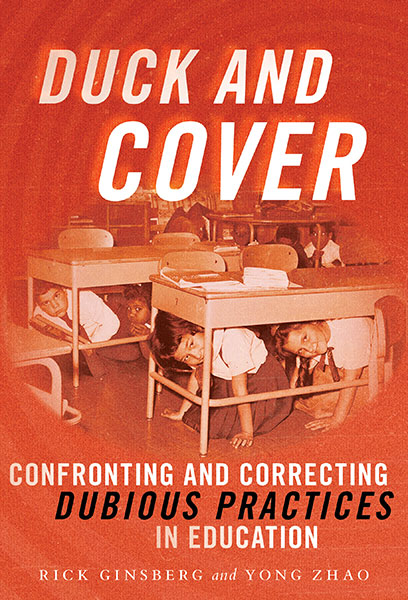
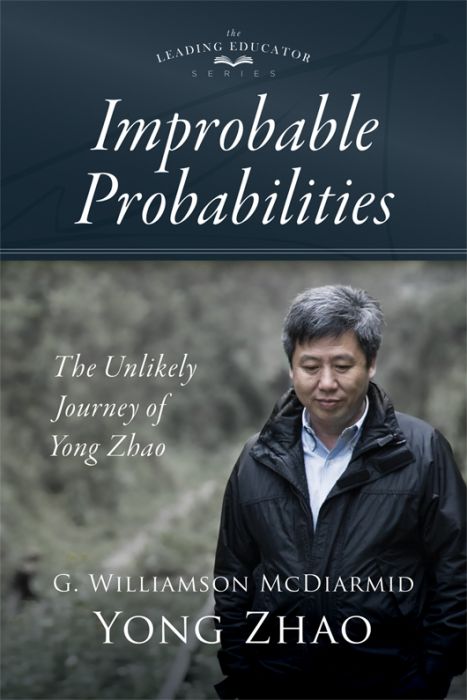
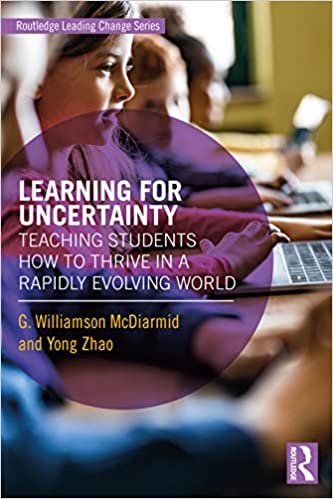
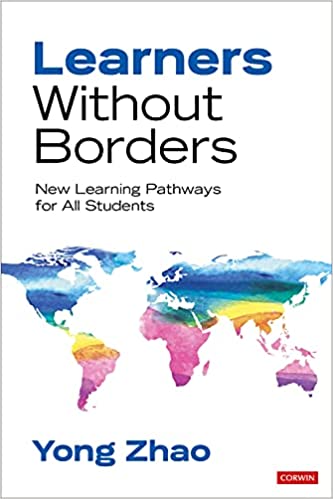



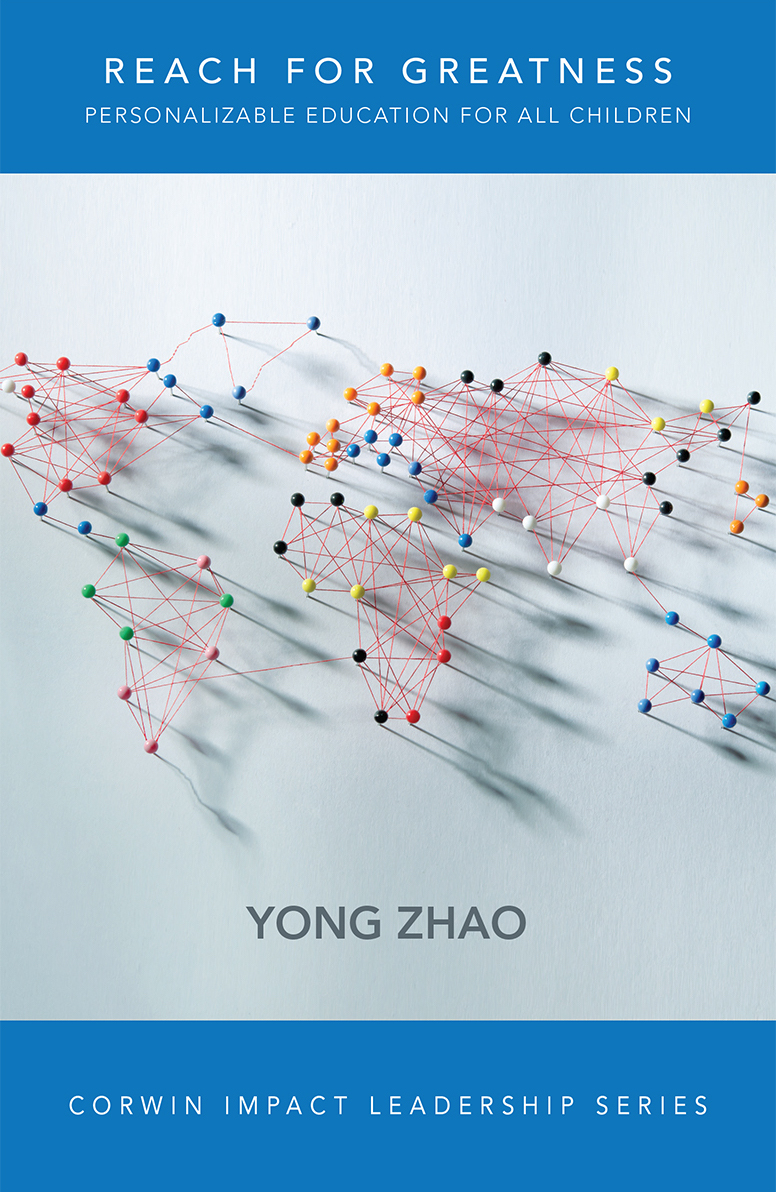
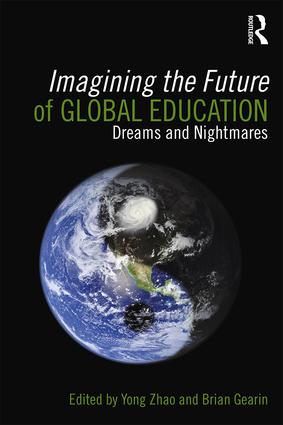
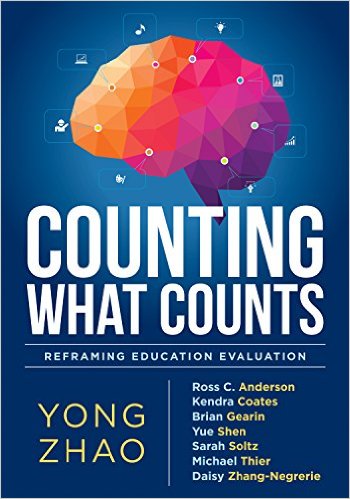
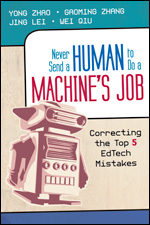
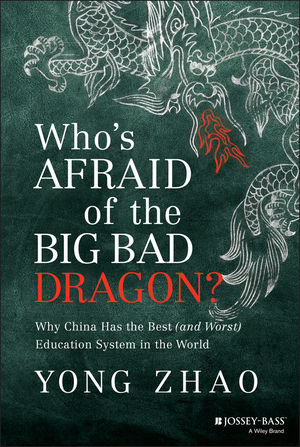
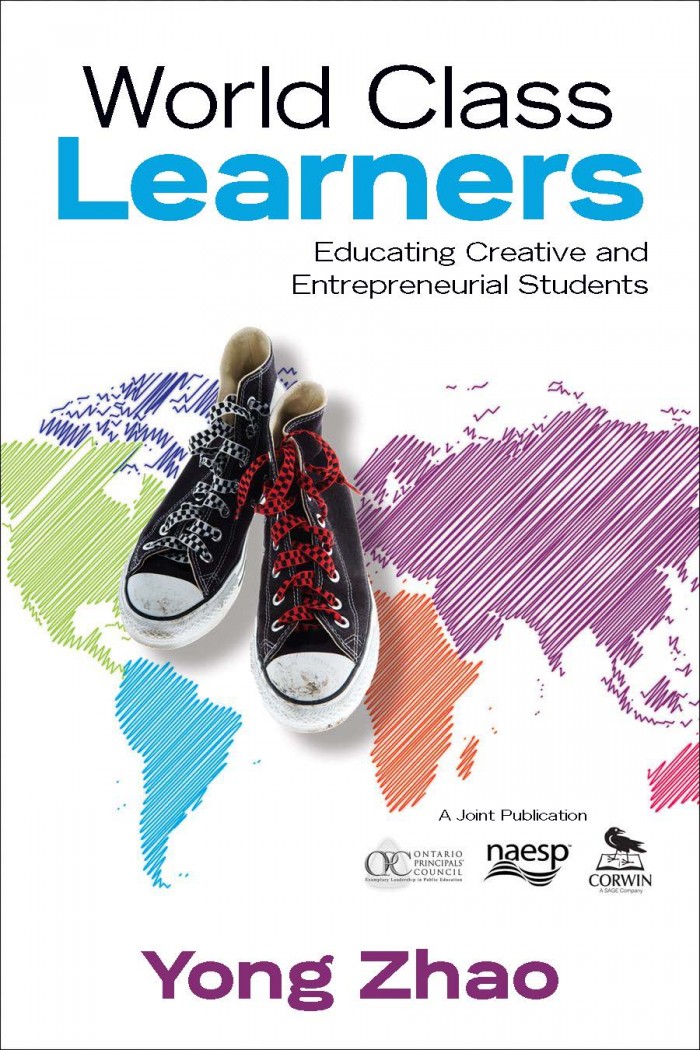

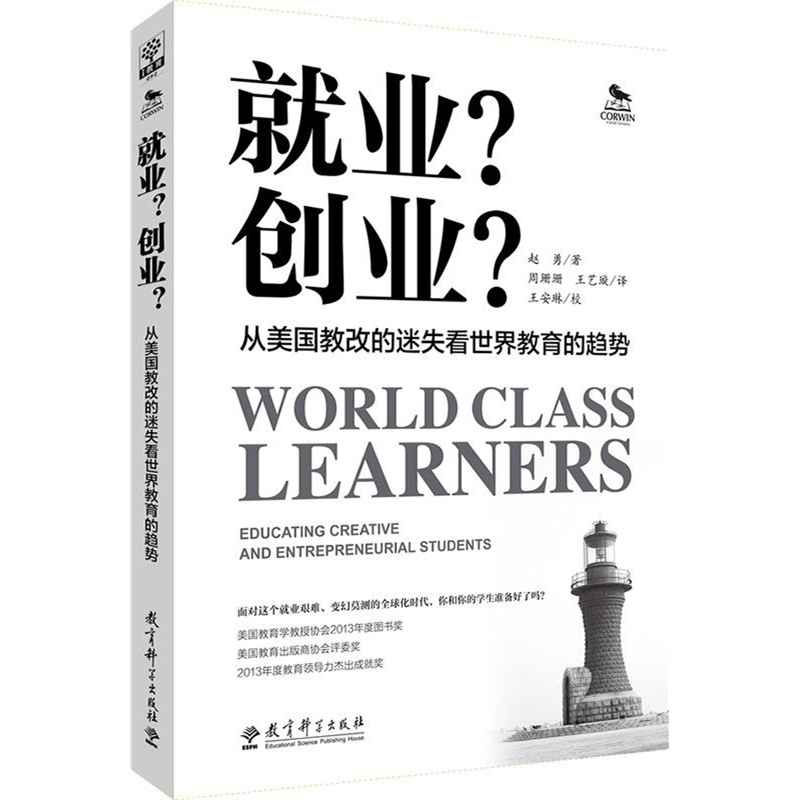











Thank you for this very exciting and provocative blog posting! There is a wonderful German word, “Weltoffenheit,” which means an attitude of “openness to the world.” You convey such a sense of enthusiasm for the dynamic new era we are entering into and present such a refreshing change of direction for American educational leaders. It sounds like reformers in New Zealand and Australia are grasping shifting global realities and are making the curricular changes to accommodate the role of emerging economies. I will be on a speaking tour with Australian Council for Educational Leaders and am looking forward to learning more about how they are adapting their educational system. Andy Hargreaves and I wrote a (perhaps optimistic) article in Educational Leadership a couple of years ago called “The Coming of Post-Standardization” and I do think we are entering this new age–right now we are in the final stages of top-down prescription and curriculum narrowing. We need to prepare for the next wave of change and your voice, and those of others on this blog, will surely help us to move in the right direction.
Dear Yong Zhao,
Thank you for your interesting and thought-provoking blog. Dennis Shirley referred me to your blog.
I agree with your observations and the points you have made in the summary. There are some exciting things happening in the education systems in the Asia Pacific. But, as you have indicated in your paper (Increasing Math and Science Achievement: The Best and Worst of the East and West; Phi Delta Kappan, 2005), economies such as Hong Kong, Japan, Korea, and Singapore seem eager to abandon what the United States would love to have, which is a rigorous, coherent, systematic math and science curriculum instead of inquiry-based, constructivism-driven, child-centred, progressive math and science education, which the US now seem similarly eager to discard. These economies are looking for ways to address their own problems, such as their students’ lack of creativity, focus on memorization over application, a disconnection between school learning and real-life situations, and stressed students. So, essentially, what the East Asian reformers want for their future is America’s past and present. What the US wants now is the East Asian past and present.
The Romance of the Three Kingdoms starts with “?????????” (loosely translated: after a period of differentiation, there will be integration. After a period of integration, there will be differentiation). If we simplify and over-simplify the discussion to a dichotomy between rigour and creativity (this dichotomy is probably not valid in the first place), after reaping the benefits at one end, systems are shifting because of the ill effects of not having the other end. Even if the pendulum could swing to the other end, it will swing back again for the same reason. A concern is that many systems are shifting not because of pull factors but because of push factors. Reforms are taking place because “the students are not achieving results” or “the students are not creative enough”. As you have rightly pointed out, current strengths are weakened without solving problems.
A big question in many education reforms is whether there is a good balance point somewhere. I wrote this about the “teach less learn more” reform in the Singapore education system (Educational reform in Singapore: from quantity to quality; Educational Research for Policy and Practice, 2008): “On the one hand, the current content is crammed with facts, definitions, formulae and other ‘embellishments’. On the other hand, trimming content does not mean that textbooks, notes or other sources of information in the classroom should be just nothing more than skimpy outlines. On the one hand, the current system drills the student and ‘repetitive practice’ stifles creativity. On the other hand, learning also requires frequent practice—try getting a driving license and not driving for the next 10 years. So, drills are not necessarily bad things. So where-in lies the balance?”
Perhaps a bigger question should be: can both rigour and creativity be pursued concurrently without a trade-off? Can one open one’s doors and raise test scores simultaneously? Can one support foreign language acquisition, while raising the standards of English, Math and Science all at the same time? Perhaps the idea of balance and trade-off is restricting the thinking in this matter. The more productive idea is synergy.
Another excellent piece! I’ve been following your work for years. Pak brings up some interesting points. (Thank you, Dennis, for sending folks to Dr. Zhao’s blog. I’ve been sending my graduate students to the blog for the last year or so.) Maybe we should reconsider our obsession with rigor in education, instead of attempting to strike a balance with creativity. If rigor is what it is defined in the dictionary (synonyms: rigity, strictness, exactness), then I would think we wouldn’t want rigor as a focus of our schooling system–at least not in societies and economies that depend on knowledgework.. In military training, perhaps, but not in a system where we want to foster critical thinking and creativity. We’ve been hearing that “rigor = relevance and relationships.” I would suggest relevance (of curriculum) and relationships (knowing students’ needs) actually equals creativity and high-level cognitive growth…and high-level application of knowledge and skills…and the development of dispositions (soft skills?) that are crucial for societal and economic success. I’ve been conducting research with low-income minority high school students, measuring their levels of “non-cogntive” variables as pioneered by Bill Sedlacek at the University of Maryland. As Dr. Zhao has said in other publications, maybe we’re testing the wrong things…my initial findings do suggest that we are.
Very thought provoking article and comments. When considering educational policy I start with the question “does the policy help create a more passionate learner or less passionate learner?” Are students more passionate about becoming a life long learner if we focus on more testing and a more focused curriculum? Or would a broad curriculum that encouraged creativity more effectively light the fire of passionate learning? What I do know from my 30 years of business experience is that the people that I see are most happy and successful are the ones that never stopped learning; they are passionate, creative, innovative, excellent communicators and brimming with self confidence. You don’t learn to “think outside the box” by taking a test!
[…] But de-funding our public schools and narrowing education achievement to scores on standardized tests is taking us in a direction that will in fact leave our country out of the global economy. […]
Yong, You explain crucial points – for the U.S. to be globally competitive, our students need to develop global competence. Most obviously in developing global competence is study of international languages, cultures and events. As you mention arts and humanities have gotten short shrift in the last several years, in favor of tested subjects. To be globally competent, in addition to knowing more about various international cultures and languages, our students need to understand universal themes, which arts and humanities convey.
Excellent point about the irony of international languages and humanities being most severely curtailed in schools with economically disadvantaged students – the very students who have less access to international travel, arts and other resources outside of school.
Literacy and numeracy are essential for competence, globally or otherwise, yet literacy and numeracy instruction and humanities education do not have to be in competition with each other. There are teachers who teach reading, writing and math through their social studies, (and science) curricula. Literacy in English and math skills can also be incorporated into international language study. Arts of all forms can be infused into any curriculum – and also need special time and focus.
Elementary teachers are more likely to use interdisciplinary approaches, than middle school and high school teachers. When middle school and high school teachers are given time and support for collaborations, more cross discipline curriculum is implemented. Some integrated curriculum and projects are offered, by some college instructors, as well. A combination of interdisciplinary learning, single subject learning, and availability of in-school tutoring is a way to provide education that forwards knowledge and skills for global competence.
But global competence depends on attitudes as well as abilities. As your blog asserts and blogger Dennis Shirley quotes, “openness to the world” is basic to contributing and thriving in a global economy.
Dear Yong Zhao,
Thank you for this very interesting post. It addressed an area that as an educator is often forgotten. We have been forced to focus so much on test score that i believe the bigger picture has been lost. I was shocked by the statistic that only 18.5% of k-12 students are introduced to foreign languages. Research has shown how students at the primary grade levels are sponges for foreign languages. It is a shame that we are not taking advantage of this in the “United States. To me foreign languages is the foundation of globalization. Instead of embracing this we are hindering our students. The other countries that you visited had a great sense of urgency for students to be literate in other languages. When will we find this urgency? Thank you for sharing the Concept of “global Schools.” This is an excellent idea that would benefit so many students. I work in an Urban school and although we might not be able to show them all of the world the thought of bringing parts of the world to them is very exciting.
i think you wouldnt even be locally competitive. there are so many things required to compete in global world… and one thing missing here is that knowing a number of different languages is a big edge for global competition